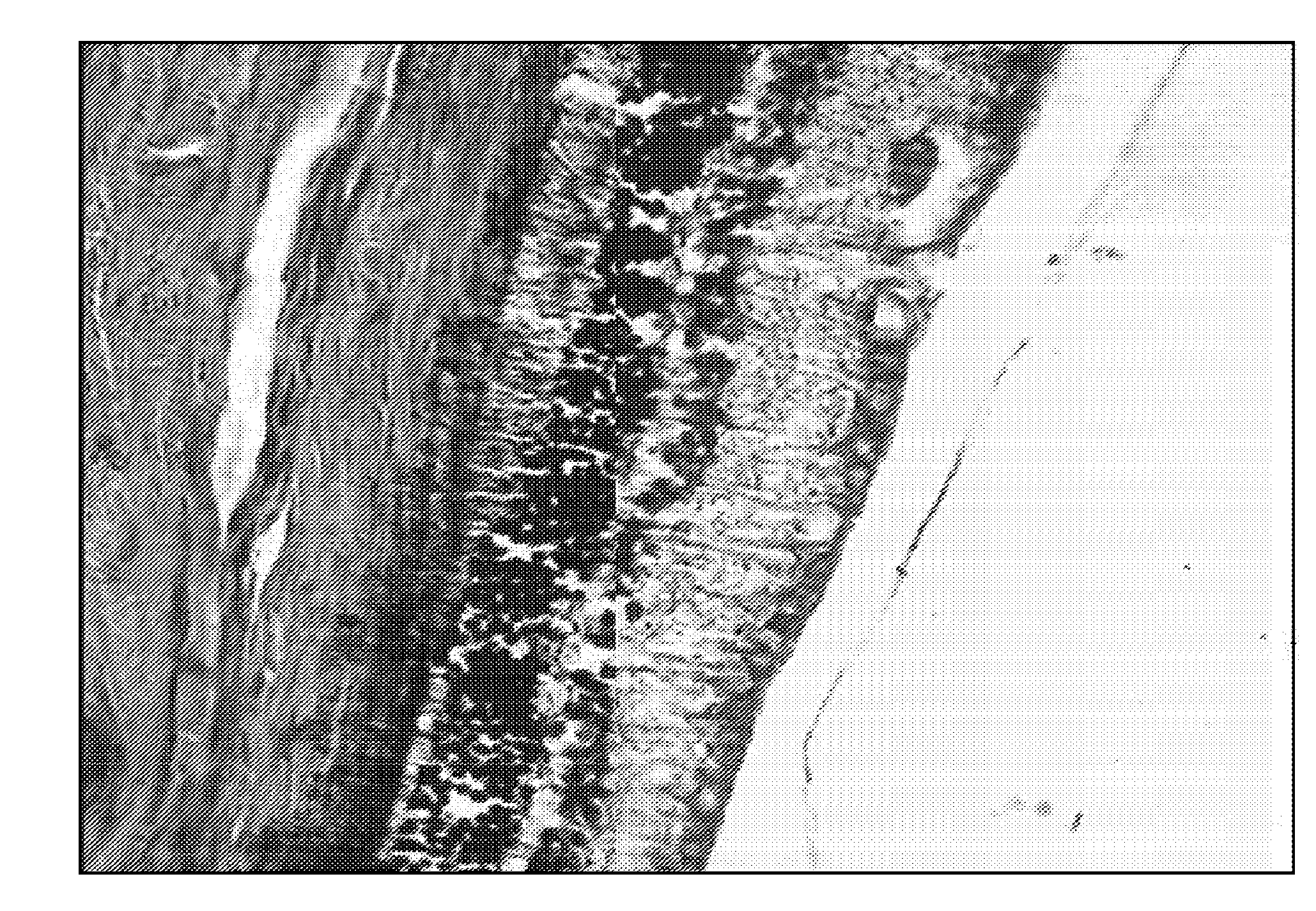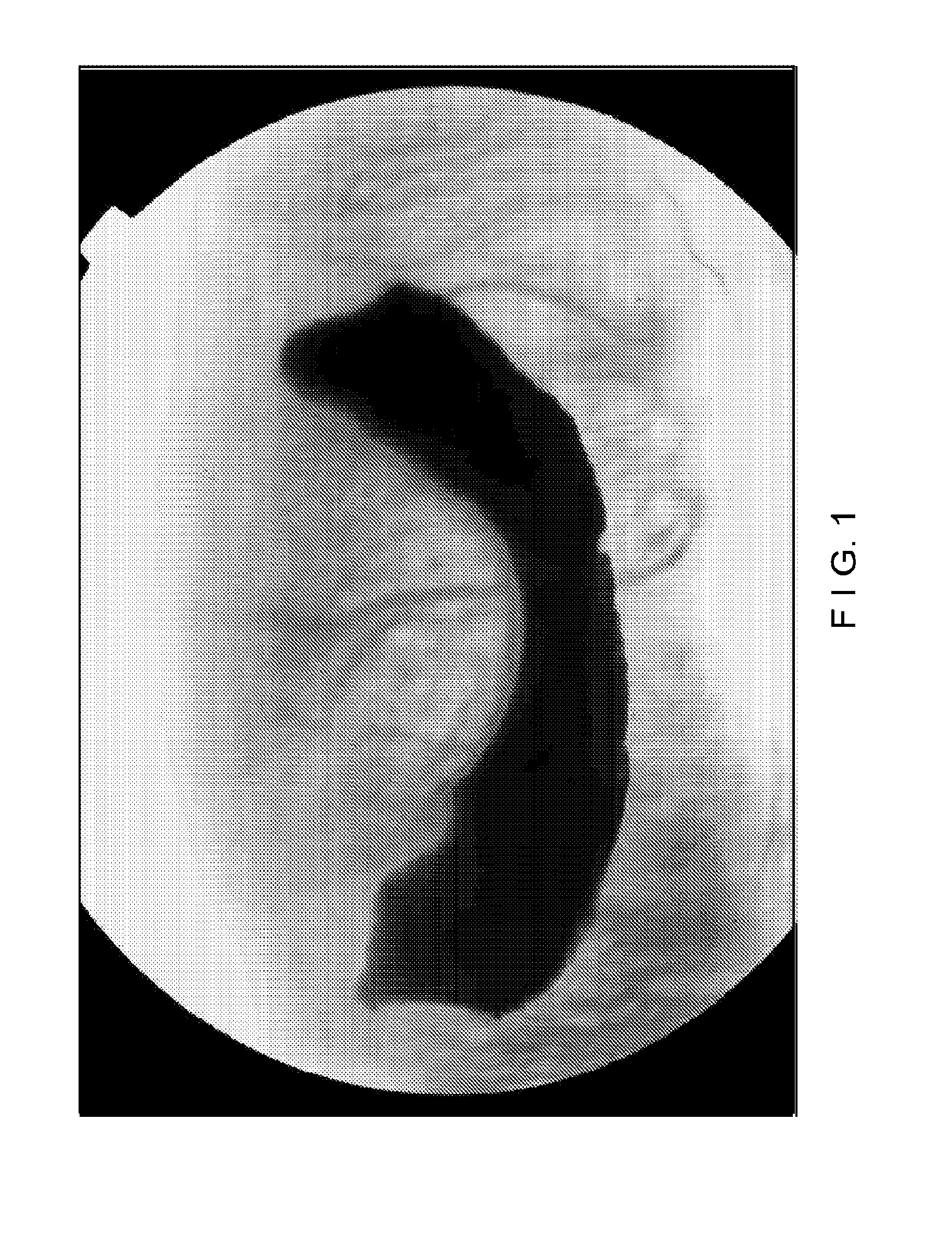Material for medical use comprising nanoparticles with superparamagnetic properties and its utilization in surgery
a superparamagnetic and nanoparticle technology, applied in the direction of drugs, prostheses, drugs, etc., can solve the problems of insufficient to permit a definitive attachment, inability to achieve adherence, and air remaining inside the eye for 48 hours
- Summary
- Abstract
- Description
- Claims
- Application Information
AI Technical Summary
Benefits of technology
Problems solved by technology
Method used
Image
Examples
example 1
[0079]For the stage of preclinical experimentation, the effectiveness of the material underwent trial on cadaveric eyes of pig and in vivo eyes of rabbit.
[0080]a) Trial on pig cadaveric eyes. 10 pig eyes were used.
[0081]The conjunctiva was dissected from the sclerocorneal limbus, until the sclera was exposed. Afterwards, the anterior segment of the posterior part of the cup, to facilitate the image recording of tamponade action and verify that the theoretical calculation could be reproduced experimentally.
[0082]Variable-shaped rare earth magnets were implanted. In the following example, an annular magnet with a 5 mm diameter and 2 mm thickness was used.
[0083]The magnets were adhered to the sclera with cyanoacrylate. Then the detachment of the retina was induced and the retina portion covered by the SPM NP's was kept applied in all cases.
[0084]b) In vivo trail on rabbit eyes
[0085]10 albino New Zealand rabbits and 10 pigmented Californian rabbits were utilized.
[0086]10 pigmented New Z...
example 2
[0122]Examples of Performances with Magnetic Nanoparticles in Medical Applications
[0123]Magnetite superparamagnetic nanoparticles (NP) with sizes ranging between 10 and 20 nm in diameter, coated with Polyethylene glycol (PEG) and Poly(oxyethylene)-dicarboxylic acid (polyethylene glycol with carboxyl groups in its extremities—POE), in tissues. The polysaccharide coating is biocompatible. At this size and with these coatings it may be unnoticed by the patient's immunological system, for the period necessary for the treatment to be performed.
[0124]Said nanoparticles were utilized in animal models for:
[0125]The repair of retinal detachment using the magnetic force between the NP's and a permanent magnet attached to the outside of the eyeball.
[0126]The treatment of tumors by hyperthermia. These nanoparticles have the ability to bring about an NP endocytosis by tumor cells. After the endocytosis, these NP's are heated under the action of an alternate magnetic field, thus producing the nec...
example 3
[0132]Generally, magnetic nanoparticles (NP) are synthesized through a chemical pathway. As an example of the manufacturing of magnetite (and cobalt ferrite) NP's, we may mention the synthesis from organic precursors, such as Fe(acac)3 [and, for the case of cobalt ferrite, with the addition of Co(acac)2 in a stoichiometrical ratio) in the presence of surfactants (oleic acid and oleylamine) in ether (organic solvent). The formation of NP's takes place at a temperature of 270° C. and the precursor / surfactant ratio permits to control the average size of the particles, with a very narrow size distribution. The product of this synthesis contains a suspension of magnetite (or cobalt ferrite, as the case may be) coated in oleic acid, what precludes their agglomeration. The coating of these particles may be changed to hydrophileous that permit the particle suspension in aqueous media that are also of interest in the applications for medical treatments such as, for example, dextran, polyethy...
PUM
| Property | Measurement | Unit |
|---|---|---|
| Size | aaaaa | aaaaa |
| Size | aaaaa | aaaaa |
| Magnetic field | aaaaa | aaaaa |
Abstract
Description
Claims
Application Information
 Login to View More
Login to View More - R&D
- Intellectual Property
- Life Sciences
- Materials
- Tech Scout
- Unparalleled Data Quality
- Higher Quality Content
- 60% Fewer Hallucinations
Browse by: Latest US Patents, China's latest patents, Technical Efficacy Thesaurus, Application Domain, Technology Topic, Popular Technical Reports.
© 2025 PatSnap. All rights reserved.Legal|Privacy policy|Modern Slavery Act Transparency Statement|Sitemap|About US| Contact US: help@patsnap.com



